Team Yankee by the Analytics V3
By Howard West
The original Team Yankee Analytics was published on January 22nd, 2021 Team Yankee Analytics V2 was published on August 13, 2021, The base premise behind these articles was to answer the question: can a person who plays a miniatures war game use some basic data collection to keep track of your performance in tournament play, over a specific period to improve your tournament results based on previous tournament games?
The original article had data from 50 tournament games from the summer of 2018 thru August 2020, V2 added 34 more tournament games thru August 2021. V3 adds 30 more tournament games thru June 2022. My data set now consists of 114 games.
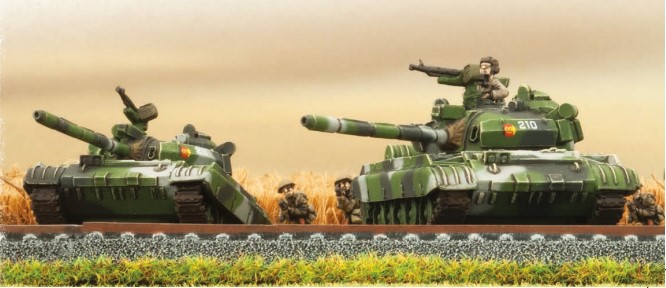
So what is new in Analytics V3?
After the publication of Analytics V2, I received quite a few comments and e-mails asking me if could add the data on the types of Armies that I have played and the Tank Teams and Air Units in my Army Lists. That information has been added in various sections of this article.
So, let’s start with the definition of Analytics.
The Business Dictionary defines Analytics; as the study of past historical data to research potential trends.
Type of Data that has been collected?
When I originally started collecting the data in, In July 2018, I wanted to answer can I monitor the performance of a new Team Yankee Army? I felt that if I was going to make a financial and time investment to purchase and build a new Team Yankee Army. Could I gain an understanding of the types of armies that I would oppose, how often did I Attack vs Defend, and what was the mission? Did they have Air? What kind of Tank team did they have?
To answer those types of questions, I started writing down some simple consistent notes about each of my games. The following is what I have collected for each of my Team Yankee tournament games since July 2018:
- Date and Location of the tournament
- What was the mission?
- Did I attack or defend?
- What was the opponent’s army’s nationality?
- Did the opponents have Armor? If yes what types of tank units did they have?
- Did the opponents have air? If yes what types of air units did they have?
- What was the # of points used?
I also have started adding a brief description of the opponent’s list. EX: US M-113 Mech Company with a Canadian Leo-1 Company allied formation. Also, I do not document quantities, EX: 13 Leo-1 or 9 Leo-1 Tanks are just Leo-1 Tanks encountered.

Chart Notes: on the Charts below V1 & V2 means Team Yankee Version V1 & V2
# of points used for each Tournament
The chart below reflects the points used for each of the 36 tournaments that generated the 114 Team Yankee Games. Currently the 90-99 and Variable have been the most popular point tournaments that I have played.
Note on Variable: Variable means that the TO has set different point values for each of the rounds.
What was the mission?
The Chart Below illustrates the % of the Mission types that have been played over the last 114 Team Yankee games. When you compare the current 114 missions that have been played vs the prior two versions of this article you will notice the downward change in the top 5 missions played as the Extended Battle Plans out of the Team Yankee Missions Pack now account for 14% of the total missions that have been played.
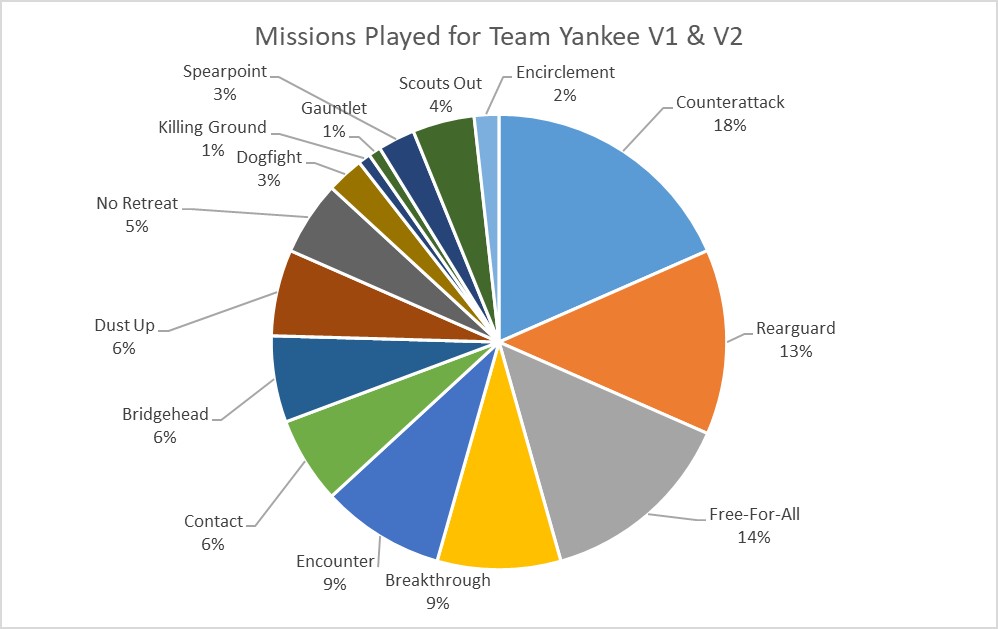
Note: The Team Yankee Missions Pack was used in all of the recent tournaments the Tournament Organizers (TO’s) have been using the Extended Battle Plans Matrix. In some cases, they may limit or mandate the number of Attack, Defend or Maneuver stances for each tournament or may provide the Missions.
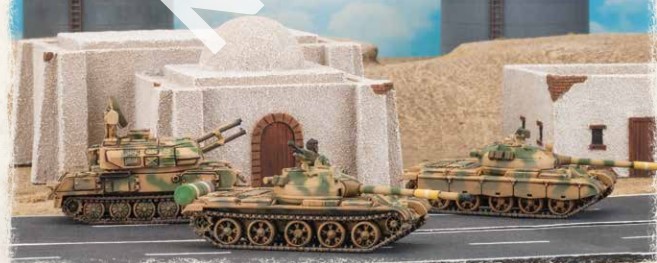
Did I Attack or Defend?
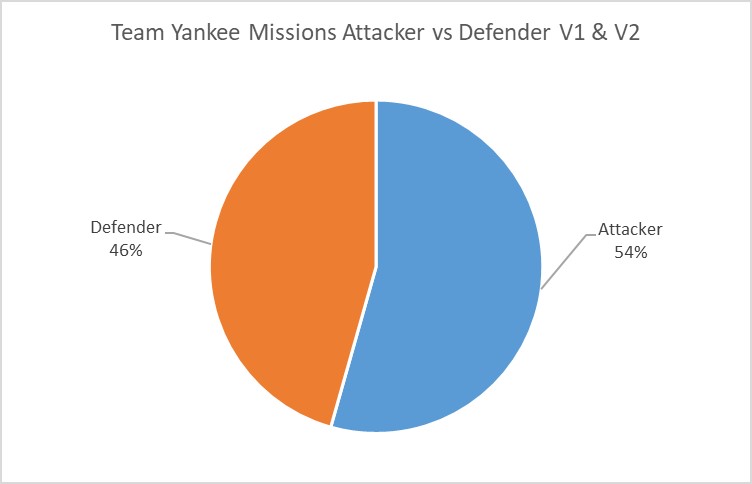
The chart above illustrates the % of the time that I Attacked vs Defended. This chart reflects a 5% increase in the % that I attack vs the V2 article. Since the V2 article, I have been playing lists with 2 tank formations and normally pick an Attack or Maneuver Stance. This reduces my risk of having to play a Deep Reserves Mission. In tournaments where the TO mandates that you use each stance once, I replace my 2nd tank formation with an infantry formation.

Opponent’s Armies Nationality?
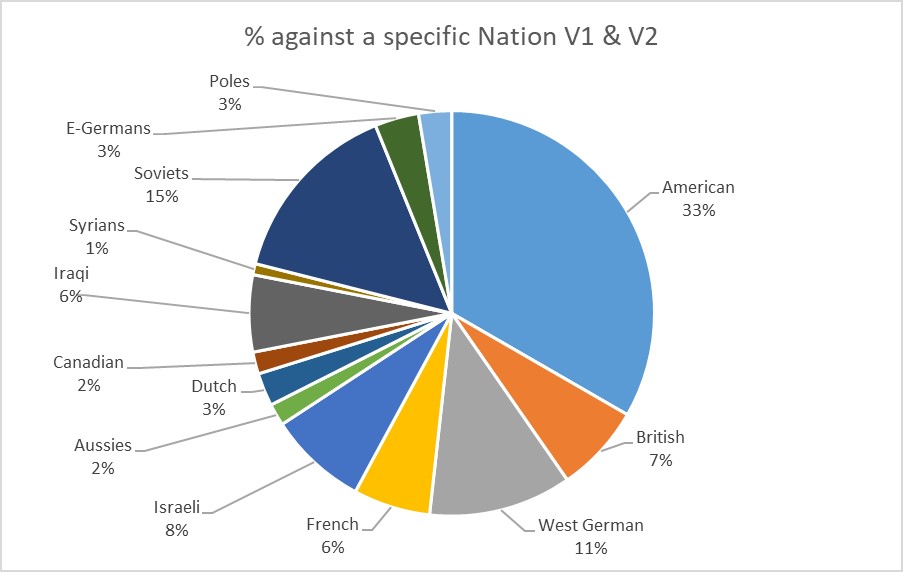
The chart above illustrates the % of times that I faced a specific nation. Based on the location of the tournaments that I have entered, the entry still leans very heavily towards the NATO faction. The 78% vs 22% NATO vs Warsaw Pact is pretty consistent with my first two articles. In my previous article, I counted the Iraqis in with the Warsaw Pact faction and corrected that in this article.
Since the previous article, I have faced multiple different Israeli players, which accounts for the near doubling of the games vs Israelis. Also, I have seen more players using more light formations for their 2nd or allied formations such as American LAV Companies, Light Attack Companies, and Light Cavalry Troops. Also as expected I have seen more West German Marder-2 Formations. This knowledge has defiantly helped me with list construction as my opponents’ army’s meta changes.
In 2022 I think you might see the above mix change especially with the new Warsaw Pact book.
Note on the above chart data: The above data only represents the nationality of the core formation of my opponent’s lists and does not account for an Allied formation that might be in my opponent’s list in a specific game. EX: the United States with a West German Ally.
What have I been playing?
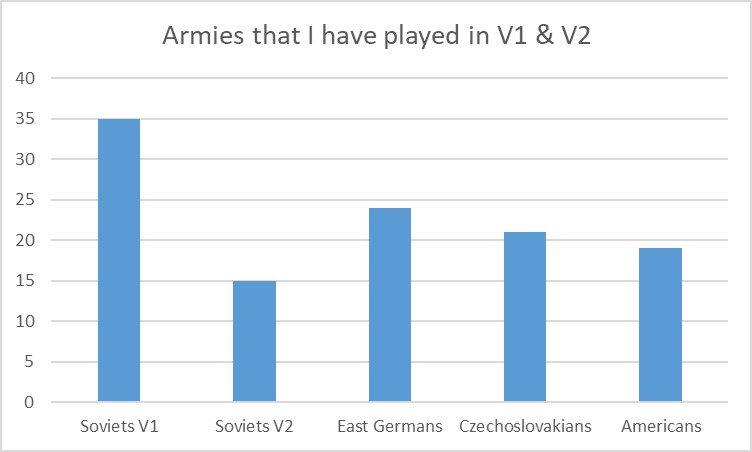
The chart above illustrates the # of times that I played a specific nation in the 114 games played.
The above nations lists that I played had the following additional breakdowns:
- Soviet BMP Infantry, and or T-62M Tank formations and sometimes with Allied East German T-55AM2, T-72M Tank, or Czechoslovakian T-72M formations.
- East German BMP Infantry formations + Soviet Allied T-62M Tank formations.
- Americans Bradley Mech Infantry formation + various American 2nd formations and sometimes West German M-113 Allied Formation
- Czechoslovakian T-72M and T-72B formations and sometimes a Soviet BMP-2/BMP-3 allied formation.
Did the opponent have Air?
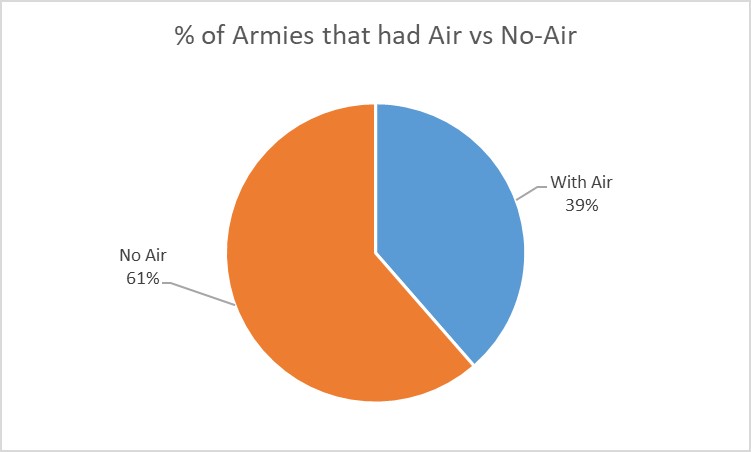
The above chart reflects a 6% decrease in the number of times that I encountered players having Air units in their lists from my V2 Article. This decrease has surprised me. In my V2 article, I stated that I thought I would continue to see an increase in the % of air units that my opponents are using. I still think we should see an increase in Air units being used, with the arrival of the low-cost Su-17 and SU-22 air units in the new Warsaw Pact Book.
But that will be based on the ratio of NATO vs Warsaw Pact changes in my tournament area. Also just because they have them on their lists does not mean they ever leave the comforts of their aircraft shelters. In many of the games, my opponent’s Air Units never arrive or make a single appearance. Going forward my lists will continue to have at least two or three Anti Aircraft Units.
Note: Air is both Airplanes and Attack Helicopters.

Air Units Encountered
The chart below was constructed in response to several of the comments and suggestions that I received from people reading the first publication of Team Yankee Analytics, asking if I had data on the types of Air Units that I encountered.
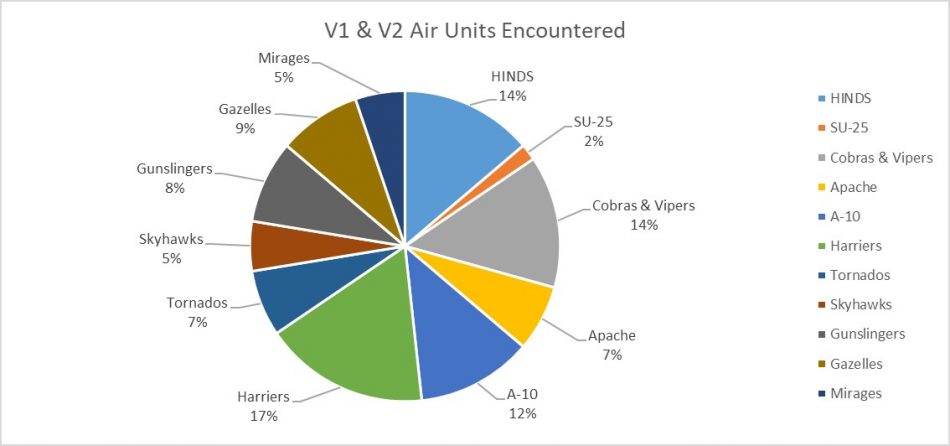
The chart above reflects the 58 different Air Units that I encountered that my opponents had in their lists in the past 114 games. In several cases, players had multiple Air Units in their lists. EX: Mirages and Gazelles.
Note on the above data: If a player had three Hind units in their list the above chart would only reflect one encounter, in tournaments that allowed players to have multiple lists or the points varied per round. I only accounted for Air Units that were on the lists that I played against in that tournament.
Combined V1 and V2 Tank Units Encountered
The chart below was constructed in response to several of the comments and suggestions that I received from people reading the first publication of Team Yankee Analytics, asking if I had the data on the types of Tank Units that I encountered in my 114 games.

The chart above shows the types of tank units that I have encountered in the last 114 games. I can use the data from this chart and compare it to the Nations that I have played against and it should help in future list construction or list tweaking. EX: Since I have encountered the US lists 33% of the time, I should have lists that can deal with the M1-Abrams that I have encountered 17% of the time.
Logically if I can deal with an M1-Abrams I should be able to deal with the US or Israeli M-60s, you might see more M-60s than you would see M1 Abrams and you might adjust if folks play M-60s in your playing area. I will be adding T-72B and T-55 Missile Tanks once I encounter them.
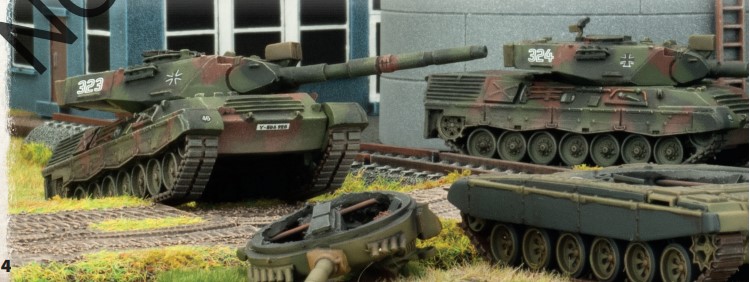
List Construction Possible Changes
With the arrival of the new Warsaw Pact Book for Team Yankee, one of the major new units is the T-72B which is available for the Poles, East Germans, Czechoslovakians, and Soviets. If I look at the above data, I have faced tank units with AT < = 20 66% of the time and AT > 20 34% of the time. With that info and compare that to the number of times that I have played East Germans and Czechoslovakians in 40% of my games.
Replacing at least some of my T-72Ms and with T-72Bs with FA18 should help reduce the number of tank losses that I have taken when playing against armies whose tanks are AT <=20 and now have a dice roll chance vs AT>20. Also upgrading a T-55AM2 unit to a T-55AM2 Missile Tank is another option.
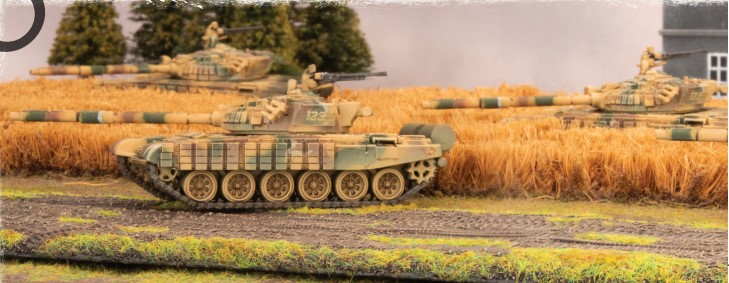
Comments on the Tank and Air Chart Data
Just to clarify what you are seeing in the charts, it shows the % of times that one of my opponents had a specific tank unit in their army list. So when you see that I played against M-60 tanks 15% of the time, it does not state how many M-60s. It could be between one platoon to several platoons on an opponent’s list. In a specific tournament if I encountered 3 different players playing M-60s then that would be counted as three for my data set.
This is the same way that I collected the Air Unit data. I also do not differentiate between a Dutch, West German, Canadian, or Aussie Leo-1, they are just Leo-1s for my data collection purposes. The same with M1-Abrams, I did not break down the different M1-Abrams tanks. They are all just Abrams tanks. I hardly ever see an up-gunned Abrams Tank unit. I did this to simplify the charts and my data collection. But I do collect it for the different Warsaw Pact type tanks such as the T-72, T-72M, T-62M, T-62, T-55AM, and the T-55AM2 since the vehicles have different stats.
In tournaments that players could or had to use multiple lists where each round of the tournament you could have different point levels or could choose between two different lists to use. My data only reflects the lists that I played against, not what the player could use in a different round.
Also, none of the Tank types in my armies are in the charts above. The chart below shows the tank types that I used in the 114 games.
My Tank Data
The chart above reflects the tank units that I used in a specific tournament, not the number of times they appeared in each of the tournaments. Not all of my various army lists that I used had tank units in them. When I bring out the V4 article the T-72B and T-55MT will play key roles in my go-forward East German and Czechoslovakian army lists.
Summary:
Collecting the data and storing it in something like Excel was pretty easy, you do not need to be an Excel guru to build the charts and graphs that I have enclosed. The collected data and the results from the analysis of that data have helped me construct better lists. This same approach could be used for Flames of War.
One thing to remember is that your results will vary based on what your opponents are playing in tournaments that you play in.
Send me your questions or ideas on what you might want to see added, I normally reply in a few days.
Good luck with your Team Yankee Analytics, see you in about 25 to 35+ games for V4.


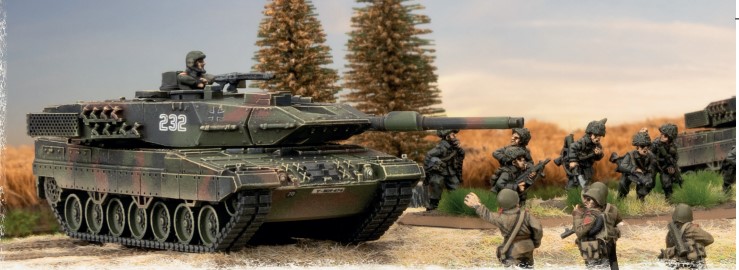
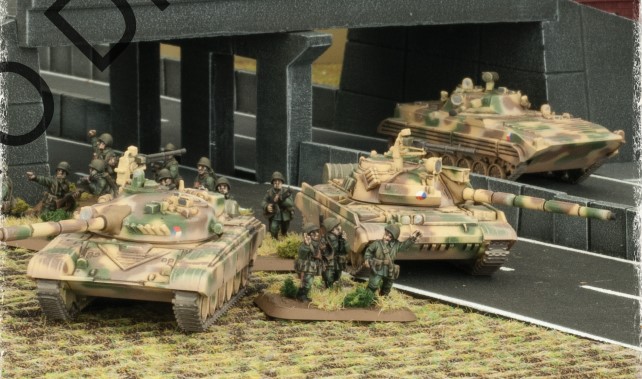


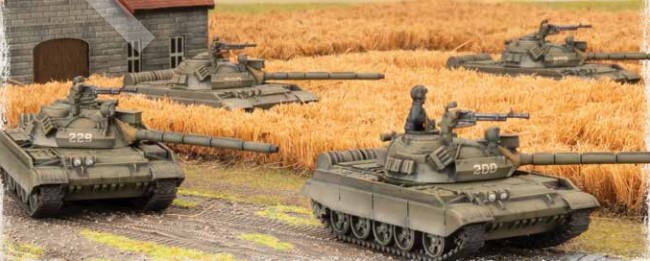
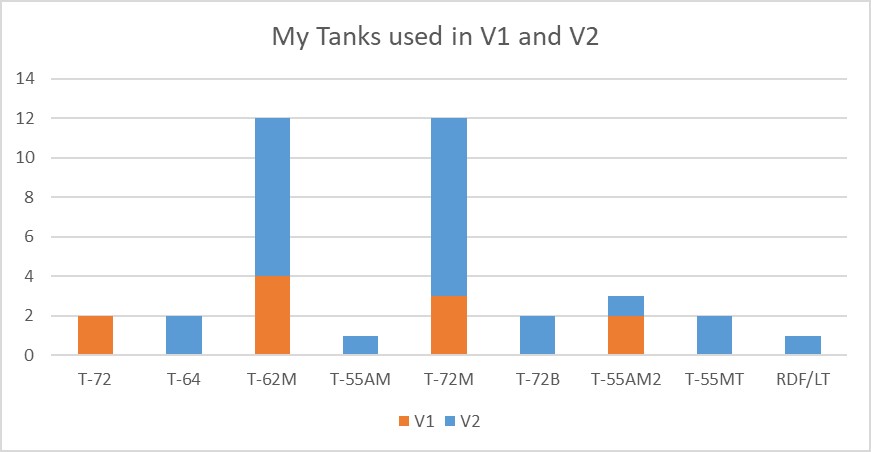
Howard thank you for the continued series of articles on this subject. I hope to start my own data collection in the near future.
Thanks, John for the comments. The funny thing about this and the previous articles is that you played in many of the same tournaments that built my data set. You just ran into different players that I never played against in the same tournament. That is one of the reasons that I added the tank units that I used, the V3 article now shows a wider view of what is being used at those tournaments.
Hello,
I play East German myself. I was quite successful with the old Volksarmee book in our small circle of players. I spammed T55AM2. Since the new Warsaw Pact book, I lose almost every game.
Which lists do you play with the East Germans and the Czechs and how successful are you with them in the tournaments?
Best Regards
Thanks, Kay for the comment
My best results were East German BMP infantry formation with a Soviet T-62M allied formation. I played the Soviet Formation with a 2-3 tank companies and a BMP-2 company and sometimes a BMP-2 recon unit. That gave me 2-3 tank companies + 2 BMP-2 infantry formations(1 EG and 1 SOV). The East Germans controlled the artillery. The best success I have had with Czechs have been a T-72M battalion with a Soviet BMP(BMP-2 or BMP-3) allied infantry formation. I have tried the T-55 Missile unit have had pretty decent success with it. Still learning how to us the T-72B tank unit. I have done both of them with the Czechs. My next set of tournaments, I will be going back to East German BMP infantry and a Czech Tank formation. I hope to work that combo for the next year.
What are your opponents playing? Are you playing a different list now? Thanks HW
At first I tried the old concept but quickly realised that this no longer works. T55AM2 are now almost twice as expensive as in the old book.
At the moment I am experimenting with different concepts of Czechs with a lot of atillery and infantry to cover them. Here I lack the movement and the attack.
I also tried NVA with T72B, but ended up with the same number of units/models as my NATO opponent on the field, except that his stats were better.
In the last game I tried it with the Poles BMP1 and 2 + T72B against Soviets.
My next attempt will be to play the Poles’ BMP and the Czechs’ T72B.
Before that I asked the people in my circle to swap armies with me so that I can play against the Warsaw Pact to get a new perspective.
My opponents are Israel, British, West Germans and Soviets.
I have created the same list with all three nations. Although the scores differ evenly between the three, the gap in points is not even.
Czechs: 69 points
East Germans: 83 points
Poland: 92 points
T-72B Tank Battalion HQ
1x T-72B
3x T-72B
3x T-72B
2x BMP-1 Scout
2S1 Carnation Artillery Battery
3x 2S1 Carnation
4x ZSU-23-4 Shilka
BMP Motor Rifle Battalion
BMP Motor Rifle Battalion HQ
BMP-2 Motor Rifle Company – medium
BMP-1 Motor Rifle Company – smal
2x BMP-1 Scout
3x 2S1 Carnation
2x Spandrel
4x ZSU-23-4 Shilka
Support
1x BMP-1 OP
2x Spandrel
Hallo,
was mich noch interessieren würde, gibt es einen zeitlichen trend das heute bestimmte Fraktionen häufiger gespielt werden als früher? Wenn ja welche Fraktionen nehmen zu und welche ab.
Viele Grüße
Hello,
What I would like to know is, is there a trend over time that certain factions are played more often today than in the past? If so, which factions are increasing and which are decreasing.
Many greetings
Kay
That is a great question. So I have data from my area from, June 2018 and probably could figure out some sort of chart and have army over time vs new books. I have looked at this several times and have been asked by several people with similar questions to yours. That said to really understand it, you need to have it by Nation and Formation types. For instance In my area we are seeing a lot of American lt Cav troops or lt attack companies and many times as allied formations. So depending on how deep you would want to go, this gets pretty complex fast. The other place that has data is battle rankings and you can look what nations have been played but not any of the detail.
Hallo,
the battle rankings can give a first impression, do you have a link?
Hello,
I have looked again at the first two versions of the analysis. Thank you once again for this great database.
Could it be that you haven’t played against East Germany for a year or a year and a half?
Yes, that is correct, 1-2021. Quite a few of the people that I ran into who had East Germans have been inactive playing TY the last couple of years or are playing different armies now. Also, an East German player may have been at the same tournament and I just did not get matched up against that player. Enclosed is the link to the Team Yankee Battle Rankings page, you can use the pulldown and change the gaming year and see the different results. It sort of shows how popular a specific army like the East Germans was in that year. armyhttp://rankings.battlerankings.com/armyranking/region=4&game=7&season=0 . Thanks again for the questions, I was playing with the data and based on your question. I think I can build a chart that shows how frequently I have run across it every quarter. Building the chart might be possible but what will it look like on our webpage. Thanks, HW
Thx for all
Kay
Last Thursday in the US a large historical miniatures convention called Historicon took place and they had a TY tournament. The TY tournament was 74 points and you had to use each of the stances once. Out of the 20 players in the tournament, there were 3 East German armies. You can go to the Team Yankee Facebook group and see the lists and pictures of the 3 armies. This is the first time I have seen an East German army played in a long time at a tournament. I thought you might like to see the lists.
Kay, WARPAC generally and East Germans particularly have been affected by the lack of explicit permission to take black-box support [resulting from their book/folios being published well before v2]…and by many recent tournaments having formation limits and point levels that affected playing WARPAC disproportionately. With the new WARPAC book bringing missile-equipped T55s and the T72B, as well as explicitly correcting the black box problems you should see more WARPAC.
I did not see the benefits of t55 missile tanks. I think it is better to play BMP-2 for the missiles. But maybe your have some arguments for the t55 with missiles.
Kay
I agree with your T-55 Missile Tank statement. For the next several tournaments, and probably the rest of this year. I plan on playing an East German BMP Core formation. That has a Medium BMP-2 Company and a small BMP-1 Company for about 42-45 points. My 2nd formation is a Czech Tank Tank formation and it will vary from a T-55/T-72M, T-72M, or a T-72B formation depending on the number of points for that tournament. In the 72M or T-72B formations, after I buy the 2 required tank companies, I then buy the Medium BMP-2 company. At that point level, I will have 24 AT-21 shots between the 2 BMP Companies and the two Spandrels units. Once I get to that point level I then add in the T-55 Missile tank unit. This gives me a decent on-table force in defensive missions until my Tanks reserves arrive. I have found them to be a decent unit to provide long-range cover fire for my army, I also used them as my ambush unit.
Kay: The main benefit of the T55 missile tank is FA=14. Why? Gepards, Sgt Yorks, ZSU with nothing better to do, plus Bradleys, Marders, and Warriors can chew up BMP-based forces. Followed closely by NO MINIMUM RANGE for antitank engagements. At long, long range (32-48″) the missile is king. And forces NATO tanks to close the range. 16.1-32″ you can choose your poison, depending on the FA of the target, going guns for the FP=2+ against lighter armor. And when confronted with charging enemy armor you can countercharge to gain flank or just use the gun. And against light enough armor, unlimber your DHSK 12.7mm. Triple threat. BMP-2 costs between 1 and 1.5 AP depending on how taken (I usually use a 6-pack of transport and estimate the transport cost as 6 AP but larger units can cost more, and the recon BMP-2 is a 4-pack for 6 points). Also EG BMP-2 availability is limited. T55AM2 costs 6 AP per 5 pack and 8 with missiles, 1.6 AP per vehicle…not greatly different. The BMP-2 AT=10 FP=5 30mm cannon generates a lot of bails on charging light armor, but is really weak at flanking charging tanks. Plus they have to survive the hail of fire coming from the onrushing light armor. The AAAV are particularly dangerous, even with Concealed Gone-to-Ground. Personally, I find a mix in an EG force attractive…at 100 points you will see my army with10 T55AM2 with missiles, 12 T55AM2 w/o, 6 BMP-2, 6 Spandrels, and a flock of BMP-1s. The 22 tanks more than discourage charging light armor allowing my missile barrage time to shatter my enemy’s AT capability. But mileage, as always, can vary.